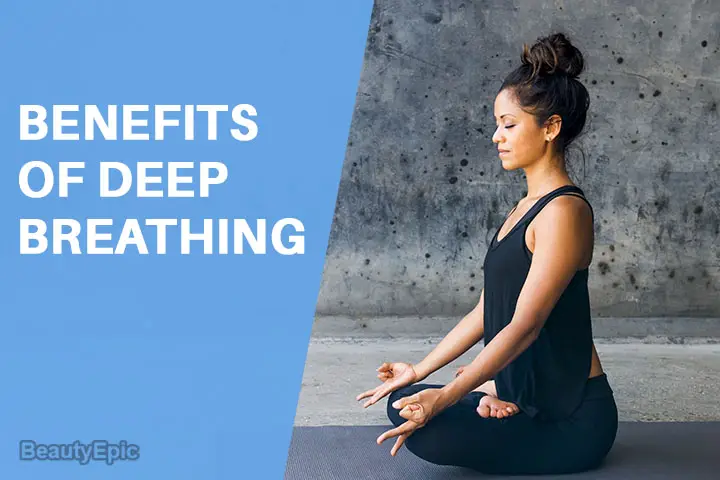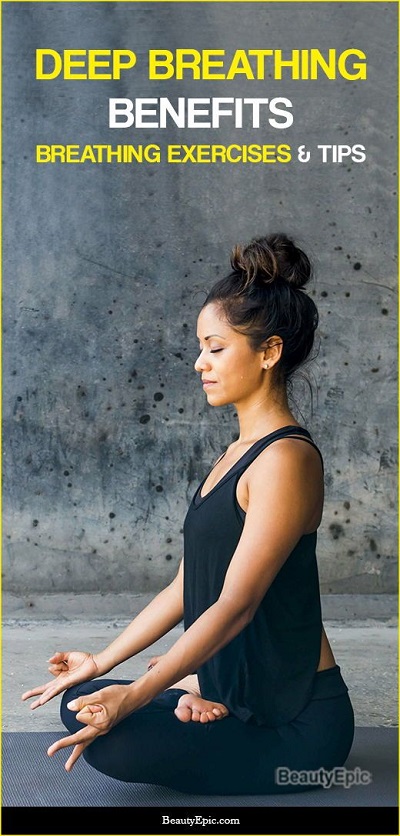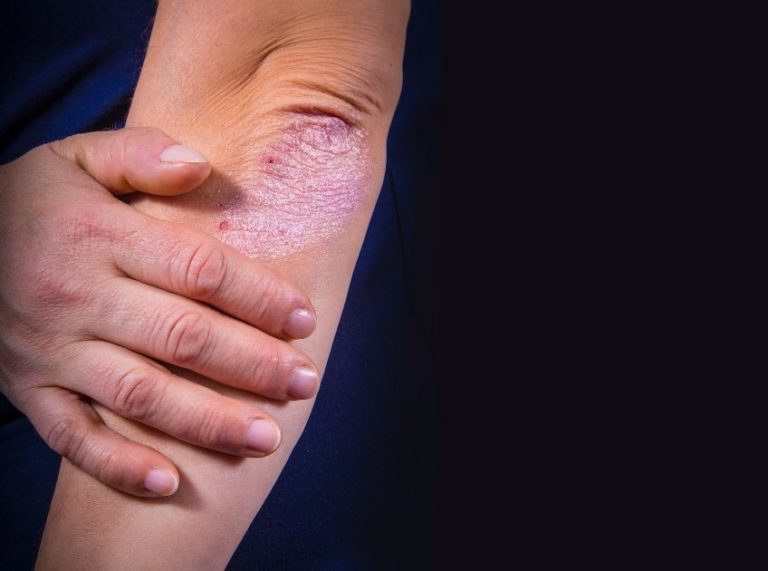
Important: This article is for informational purposes only. Please read our full disclaimer for more details.
Deep breathing has become an increasingly a very important in recovery from depression like problem and also from anxiety because many researchers have recognize that shallow breath may contribute to instant panic. In fact, at worst hours, people would use a paper bag to keep from hyperventilation. The practice of deep breathing will help to stimulate our parasympathetic nervous system (PNS) this is responsible for activities that occur in our body when our body is at rest. Deep breathing functions in opposite to the sympathetic nervous system, which stimulates the activities associated with the kind of flight-or-fight response.
Relaxing Breath Exercise
This exercise is utterly really simple and easy to do, it takes almost no time of yours, this does not requires no equipment and can be done anywhere and anytime.(1)
- Although you can do the exercise in any position by laying down or sitting but it is recommended to sit with your back straight while learning the exercise.
- Place the tip of your tongue against the ridge of tissue just behind your upper front teeth,
- Try and keep it there through the entire exercise.
- You will be exhaling through your mouth around your tongue area
- And try pursing your lips slightly if this seems awkward.
- Exhale completely through your mouth, making a sound of
- Close your mouth and inhale quietly or slowly through your nose to a mental count of four.
- Hold your breath for a count of seven to ten
- Exhale completely through your mouth, by again making a whoosh sound to a count of eight.
- This is one breath.
- Now inhale again and repeat the cycle three to four more times for a total of four to five breaths.
- Note that you always inhale quietly through your nose and exhale audibly through your mouth only
- The tip of your tongue will stay in position the whole time.
- Exhalation time takes twice as long as inhalation.
- The absolute time you spend on each phase is not important just keep the ratio of 4:7:8 in mind as this is important.
- If you have trouble holding your breath for a long time then speed the exercise up but keep to the ratio of 4:7:8 for the three phases.
- With practice you can slow it all down and get used to inhaling and exhaling more and more deeply.
- This exercise is a natural tranquilizer for the functioning of nervous system.
- Do it at least twice a day for best results and effects.
- You cannot do it too frequently have some breaks in between.
- Do not do more than four breaths at one time for the first month of practice.
- Later, if you wish, you can extend it to eight breaths in total.
- If you feel a little lightheaded when you first breathe this way, do not be concerned; it will pass by time
- Once you develop this technique by practicing it every day, it will be a very useful tool that you will always have with you whenever you feel depressed or tensed.
- Use it whenever anything upsetting happens – before you react.
- Use it whenever you are aware of internal tension or disorder.
- You may also use it to help you when you fall asleep.
- This exercise cannot be recommended too highly.
- Everyone can be benefited from it.
Coherent Breathing
- Coherent breathing is a breathing exercise it is basically based on a breathing at a rate of five breaths per minute, which is the middle of the resonant breathing rate range.
- You can achieve this if you count to five while inhaling and count to five while exhaling.
- The five-minute rate maximizes the heart rate variability (HRV), a measurement to tell that how well the parasympathetic nervous system is working.
- Brown and Bergarg also explain that changing our rate and pattern of breathing will alter the HRV, that also causes shifts in our nervous system.
- The higher the HRV the better it is because a higher HRV is associated with a healthier cardiovascular system and a stronger stress-response system in the body.
- Breathing at a rate that is close to one’s ideal resonant rate (around five breaths per minute) can induce up to a tenfold to a great improvement in HRV.
Resistance Breathing
- Resistance breathing is exactly what its name suggests to the line that breathing that creates resistance to the flow of air.
- This breathing pattern is quite difficult to understand.
- It is recommended to refer video for better undersatnding
- Resistance in breathing can be created by pursing the lips and then placing the tip of the tongue against the inside of the upper teeth then by hissing through the clenched teeth of the mouth therby tightening the throat muscles and partly closing the glottis by narrowing the space between your vocal cords, or using an external object such as breathing through a straw or small pipe.
- You may also opt for a simple way
- simply breathe out of your nose, which, according to Brown and Bergarg, creates more resistance than breathing through the mouth.(2)
Breath Moving
- Breath Moving is descriptive in its name itself is when, well, the breath moves. It is a courtesy of your imagination. Brown compares this amazing breathing exercise to an internal massage of the body.
- However it is a good thing to send your breath on a little journey around your body – as long as it doesn’t get too lost in the body — it will surely help you to keep your concentration on the exercise and not on your to-do list because counting to five can get a little old.
50 Benefits of Deep Breathing for Mind and Body

- Deep breathing calms the sympathetic nervous system. Helps you to stay active and in peace.
- The sympathetic nervous system is activated in times of stress and anxiety and deep breathing helps to reduce it.
- Deep breathing helps to tell the brain and tells the body to prepare for the fight or flight response.
- Deep breathing will slow your heart rate down in case o high blood pressure and fear.
- Deep breathing provides you quick responses in a matter of seconds your breath will communicate to your brain there is no danger which relaxes your muscles.
- Deep breathing and breathing exercises releases tension in your body very quickly.
- With practice, you can learn to breathe into the tense areas of your body and areas where you hold your pain and release them out with every exhale of the air.
- Breathing helps to boosts energy and stamina of the body.
- The more oxygen in the body, the more level of energy you will have.
- Deep breathing increases oxygen in your blood.
- Deep breathing strengthens the immune system.
- Deep breathing can release many harmful toxins in your body by 70% or even more.
- When you exhale while doing breathing patterns, you are releasing carbon dioxide waste which has passed through your bloodstream into your lungs.
- The other 30% is released through the bowels and bladder.
- If you feel uncomfortable while sleeping you must do good breahing as it promotes better sleep.
- Deep breathing also provides reduction in blood pressure.(3)
- Deep breathing also helps to normalizes the heart rate and rhythm.
- During pregnancy breathing is really very good. As your baby grows inside your womb, your body requires more oxygen to function at its optimum level. In similar way your baby also needs adequate amount of oxygen to grow properly.
- Shallow breathing is not at all sufficient to provide the body with ample amount of oxygen.
- By doing adequate breathing patterns and also with the breathing exercises, your body will get the oxygen to the level it needs it needs.
- During pregnancy you tend to feel lot of Anxiety and stresses this is a part of the whole pregnancy experience.
- Deep breathing helps to eradicate these also With breathing exercises, you can stay calm and de-stress all day long.
- As you deep breathe, you provide your body with more oxygen and energy also.
- Deep breathing also provides a great relief from achy joints and muscles pain.
- The one thing most pregnant women have a fear of is labor. But if you practice deep breathing exercises regularly, labor won’t be such a huge battle to go off with.
- Deep breathing is an awesome way that will allow you to manage your contractions and labor pain better during pregnancy.
- Most importantly, these exercises will help you stay ‘present’ and charming during your pregnancy and labor period.
- Deep breathing will let you be alive and will allow you to enjoy the wonderful experience and miracle that’s childbirth.
- Deep breathing helps you do your work with concentration and more power.
- Deep breathing helps you stay calm and in peace.
- Deep breathing helps you to control your anger.
- Deep breathing is a way to stay positive all stay long.
- Deep breathing also builds strong control over things which are unmanageable.
- Releases depression out of your body.
- Brings natural glow to your skin.
- Improves your skin texture.
- Improves your digestion.
- Improves your cough and cold.
- Improves your hearing ability.
- Improves your nasal passage or you can say widens it.
- Purifies your lungs.(4)
- It is good to loose weight also.
- It is beneficial for all ages.
- Controls blood pressure.
- Controls heart diseases.
- Makes you feel stable all day long.
- Releases all types of bad thoughts out of your mind.
- Deep breathing can also slow down the ageing process.
- Deep breathing is a good way to start your day with a boost.
- Deep breathing can reduce constipation.
How Do I Do Deep Breathing Exercises?

- You must know how to deep breathe here is Something simple to do is:
- You need to Close your eyes for a few minutes and imagine yourself on a beautiful calming space such as beach or another place you find relaxing.
- Then, take a deep breath inside your body through your nose and count to ten.
- Feel the breath going inside your body
- Release the breath through your mouth until you have pushed all the air out. Then repeat the exercise.(5)
Important Things to Remember When Practicing Deep Breathing Exercises
- Find a quiet and comfortable place where no one disturbs you
- You can sit or lie down whatever you feel comfortable with.
- A place where no one will bother you for a while.
- Sit or lie in a comfortable position remember to keep up with your back straight.
- Close your eyes and imagine yourself in a relaxing place. Or calm your mind by your own.
- Take a couple of “cleansing breaths” by breathing in through your nose and releasing out through your mouth and find a comfortable position, either sitting or standing or even lying down.
- Feel each and every intake and exhale.
- Breathe in through your nose and breathe out through your mouth using your abdominal muscles
- Make sure that you’re so your diaphragm flex and contract.
- Inhale slowly.
- Inhaling should take about 10 seconds.
- You can count in your head to 10 also so that your lower abdomen rises and falls
- Now, exhale slowly for another 10 seconds.
- Try to get into a routine and practice deep breathing for 5-10 minutes each day.
- Practicing helps you get into a routine so you can use deep breathing whenever you feel the need to relax or calm down at any point of time.
In all deep breathing has enormous benefits and is good for all ages. Everyone should do this as it not only cures but also prevents many mental as well as physical disorders.
You Might Also Like:
- How To Get Rid Of Bad Breath With Apple Cider Vinegar?
- 11 Best Yoga Poses To Boost Your Energy
- 35 Benefits of Bikram Yoga
- Best Powder Foundation For Oily Skin
Image:- 1
















